Britax Childcare Pty Ltd v Infa-Secure Pty Ltd [No 3] [2012] FCA 1019 (18 September 2012)
Innovation patents – divisional applications – relevant dates for assessment of infringement – claim construction – omnibus claims
 According to a recent decision of the Federal Court of Australia, innovation patents may, in some common circumstances, be infringed before they have even been filed!
According to a recent decision of the Federal Court of Australia, innovation patents may, in some common circumstances, be infringed before they have even been filed!
In a third decision in the ongoing Britax v Infa-Secure saga (see earlier articles Federal Court Conducts Markman-Style Hearing in Hot Tub and Shocking – Judge Compels Experts Actually to Assist the Court!), Justice Middleton has considered the dates from which infringement of divisional innovation patents can be considered. This is an important issue, because a patentee may be entitled to claim compensation for the commercial activities of an infringer going back to this date.
While it is well-established that the earliest possible date of infringement of a standard patent is the day on which it was published, Justice Middleton has found that an innovation patent may be infringed from its effective filing date. In the case of an innovation patent which has been divided from a pending standard patent application, the relevant date is the date of filing of the original patent application, even though this may have occurred years earlier than the filing of the divisional innovation patent application itself.
For this early infringement date to apply, it does not appear to be relevant whether the claims of the innovation patent were present, or clearly foreshadowed, in the original patent specification. According to Justice Middleton’s reasons, any valid innovation patent claims (i.e. novel claims which are adequately supported by the original disclosure, as well as satisfying the low ‘innovative step’ threshold) can potentially be enforced back to the original application date.
The court also considered the interpretation of so-called ‘omnibus claims’, i.e. claims which define an invention by reference to all or part of a specification, or by reference to examples or drawings that have been included in the specification in order to illustrate the invention. The provisions of the Raising the Bar Act 2012, which will come into effect of 15 April 2013, will largely prohibit the use of such claims, although they will continue to exist legitimately for the lifetime of many existing patents and applications.
Innovation patents – divisional applications – relevant dates for assessment of infringement – claim construction – omnibus claims
 According to a recent decision of the Federal Court of Australia, innovation patents may, in some common circumstances, be infringed before they have even been filed!
According to a recent decision of the Federal Court of Australia, innovation patents may, in some common circumstances, be infringed before they have even been filed!In a third decision in the ongoing Britax v Infa-Secure saga (see earlier articles Federal Court Conducts Markman-Style Hearing in Hot Tub and Shocking – Judge Compels Experts Actually to Assist the Court!), Justice Middleton has considered the dates from which infringement of divisional innovation patents can be considered. This is an important issue, because a patentee may be entitled to claim compensation for the commercial activities of an infringer going back to this date.
While it is well-established that the earliest possible date of infringement of a standard patent is the day on which it was published, Justice Middleton has found that an innovation patent may be infringed from its effective filing date. In the case of an innovation patent which has been divided from a pending standard patent application, the relevant date is the date of filing of the original patent application, even though this may have occurred years earlier than the filing of the divisional innovation patent application itself.
For this early infringement date to apply, it does not appear to be relevant whether the claims of the innovation patent were present, or clearly foreshadowed, in the original patent specification. According to Justice Middleton’s reasons, any valid innovation patent claims (i.e. novel claims which are adequately supported by the original disclosure, as well as satisfying the low ‘innovative step’ threshold) can potentially be enforced back to the original application date.
The court also considered the interpretation of so-called ‘omnibus claims’, i.e. claims which define an invention by reference to all or part of a specification, or by reference to examples or drawings that have been included in the specification in order to illustrate the invention. The provisions of the Raising the Bar Act 2012, which will come into effect of 15 April 2013, will largely prohibit the use of such claims, although they will continue to exist legitimately for the lifetime of many existing patents and applications.
 In what might be described as a ‘courageous’ ruling, a judge of the New Zealand High Court in Auckland has found, in Stewart v Franmara Inc no.2
In what might be described as a ‘courageous’ ruling, a judge of the New Zealand High Court in Auckland has found, in Stewart v Franmara Inc no.2 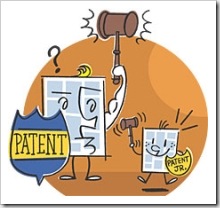 Having published the initial tranche of draft Regulations implementing the Raising the Bar patent reforms just last Friday,
Having published the initial tranche of draft Regulations implementing the Raising the Bar patent reforms just last Friday,  Draft amendments to the
Draft amendments to the  Earlier this year Justice Middleton, in the Federal Court of Australia, broke new ground in this country by holding a hearing, and issuing a decision, purely on the issue of claim construction as a preliminary matter in patent infringement proceedings (see
Earlier this year Justice Middleton, in the Federal Court of Australia, broke new ground in this country by holding a hearing, and issuing a decision, purely on the issue of claim construction as a preliminary matter in patent infringement proceedings (see 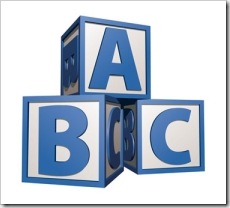 You have probably noticed the letter/number codes which sometimes appear after patent or application numbers, and if you are not a professional patent attorney or searcher you might have wondered what – if anything – they mean, and whether you should care about them.
You have probably noticed the letter/number codes which sometimes appear after patent or application numbers, and if you are not a professional patent attorney or searcher you might have wondered what – if anything – they mean, and whether you should care about them.  On 12 September 2012, the New Zealand parliament debated the new Patents Bill, in its ‘second reading’ speeches. For readers unfamiliar with the British-style parliamentary system, a ‘first reading’ is when a bill is introduced into parliament, the ‘second reading’ is generally when it is substantively debated and amendments proposed, and a ‘third reading’ is when it is either passed, or rejected (with or without various amendments).
On 12 September 2012, the New Zealand parliament debated the new Patents Bill, in its ‘second reading’ speeches. For readers unfamiliar with the British-style parliamentary system, a ‘first reading’ is when a bill is introduced into parliament, the ‘second reading’ is generally when it is substantively debated and amendments proposed, and a ‘third reading’ is when it is either passed, or rejected (with or without various amendments).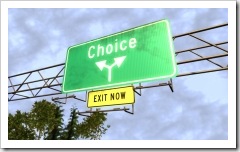 [Note: This article has been
[Note: This article has been 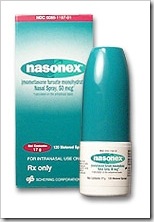 The Federal Court of Australia (Justice Jagot) has issued a preliminary injunction barring generic pharmaceutical manufacturer from marketing and selling nasal sprays containing the corticosteroid mometasone furoate (MF) for the treatment of allergic rhinitis. The injunction will remain in place pending a final hearing to determine the validity of Merck’s Australian
The Federal Court of Australia (Justice Jagot) has issued a preliminary injunction barring generic pharmaceutical manufacturer from marketing and selling nasal sprays containing the corticosteroid mometasone furoate (MF) for the treatment of allergic rhinitis. The injunction will remain in place pending a final hearing to determine the validity of Merck’s Australian 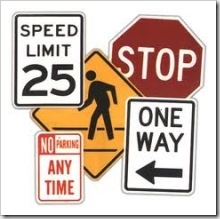 We wrote recently about the ‘issues paper’ which has been released by the Australian Government’s Productivity Commission in relation to its inquiry into the compulsory licensing provisions in the
We wrote recently about the ‘issues paper’ which has been released by the Australian Government’s Productivity Commission in relation to its inquiry into the compulsory licensing provisions in the 
